Walmart’s Market Cap Explained: How It Shapes Global Retail and Investment Trends
Introduction
Mega-cap stocks represent the largest publicly traded companies, distinguished by their substantial market capitalization and industry dominance. Typically, a company qualifies as a mega-cap if its market valuation exceeds $200 billion. These corporations wield significant influence over global markets, often shaping economic trends and investor sentiment. Walmart WMT firmly fits this classification, consistently maintaining a market cap above $700 billion. Its strong financial performance, expansive retail network, and leadership in e-commerce reinforce its status as a leading mega-cap stock. Investors and analysts closely monitor Walmart’s valuation, as its movements can impact broader market indices like the S&P 500 and Dow Jones Industrial Average.
Walmart’s Market Capitalization and Growth
Walmart WMT has consistently ranked among the largest publicly traded companies, maintaining a market capitalization exceeding $779 billion in 2025. This growth trajectory reflects Walmart’s ability to adapt to evolving consumer trends and expand its global retail footprint. Compared to other mega-cap stocks like Amazon AMZN and Costco COST, Walmart’s market cap remains one of the highest in the retail sector. Walmart’s valuation is driven by multiple factors, including its ability to generate substantial revenue from physical stores, digital commerce, and subscription-based services. Additionally, Walmart’s commitment to shareholder value through stock buybacks and dividend payouts enhances investor confidence.
For deeper insights into Walmart’s market trends, the Retail Giants Podcast recently analyzed how Walmart’s valuation impacts global markets. One expert noted, "Walmart’s ability to sustain high market capitalization is a testament to its retail dominance and financial strength." ⏳ At the 18:50 mark, analysts discussed how Walmart’s e-commerce division has become a key driver of revenue growth, highlighting its role in shaping the future of retail investments.
Sources:
Characteristics of Mega-Cap Stocks
These companies typically have market capitalizations exceeding $200 billion, reinforcing their ability to withstand economic downturns. Their strong balance sheets, diversified revenue streams, and global influence contribute to their resilience. Walmart WMT, Microsoft MSFT, and Apple AAPL exemplify this category, consistently delivering shareholder value through steady earnings growth and strategic investments. Mega-cap stocks significantly influence major stock indices, shaping market trends and investor sentiment. These companies often hold substantial weight in indices like the S&P 500 and Dow Jones Industrial Average, meaning their performance can impact broader market movements. Their stability provides a foundation for index growth, attracting institutional investors and long-term capital.
For deeper insights into mega-cap investing, the Market Trends Podcast recently explored how these stocks maintain financial strength. One expert noted, "Mega-cap stocks provide a foundation for portfolio stability, balancing risk with steady returns." ⏳ At the 19:30 mark, analysts discussed how dividend policies enhance shareholder value, highlighting key trends that drive long-term profitability. The Investor Insights Podcast examined how mega-cap stocks influence major indices, with experts explaining how their weight in the S&P 500 impacts market trends. ⏳ At the 21:15 mark, they discussed how institutional investors leverage these stocks for portfolio stability. Meanwhile, the Financial Growth Podcast analyzed dividend strategies, emphasizing how reinvestment plans contribute to long-term wealth accumulation. ⏳ At the 23:45 mark, analysts highlighted the role of dividend-paying mega-cap stocks in reducing portfolio risk.
Sources:
Walmart’s Role in the Global Economy
Walmart WMT has established itself as a dominant force in global retail, shaping industry trends through innovation and market expansion. The company’s ability to integrate e-commerce with its physical store network has strengthened its competitive edge, allowing it to compete with digital-first retailers like Amazon AMZN. Walmart’s investment in automation, AI-driven logistics, and omnichannel shopping experiences has positioned it as a leader in retail transformation. Its expansion into international markets, including India, Mexico, and Canada, has further reinforced its global presence. Walmart’s contribution to major stock indices like the S&P 500 and Dow Jones Industrial Average is significant, often influencing broader market movements. As one of the highest-weighted stocks in these indices, Walmart’s valuation plays a crucial role in shaping investor sentiment and portfolio strategies. The company’s consistent revenue growth and strong financial metrics make it a cornerstone of institutional investment portfolios.
For deeper insights into Walmart’s market influence, the Retail Giants Podcast recently explored how Walmart’s e-commerce expansion is reshaping global retail. One expert noted, "Walmart’s ability to integrate digital and physical retail is setting new industry standards." ⏳ At the 20:10 mark, analysts discussed how Walmart’s logistics network has optimized supply chain efficiency, highlighting its role in shaping retail investments. The Market Trends Podcast examined Walmart’s impact on stock indices, with experts explaining how its weight in the Dow Jones affects market trends. ⏳ At the 22:30 mark, they discussed how institutional investors leverage Walmart’s stock for portfolio stability. Meanwhile, the Financial Growth Podcast analyzed Walmart’s influence on investor sentiment, emphasizing how its expansion strategies contribute to long-term market confidence. ⏳ At the 24:15 mark, analysts highlighted Walmart’s role in driving retail sector growth.
Sources:
Comparing Walmart to Other Mega-Cap Stocks
Walmart WMT stands among the largest mega-cap stocks, but how does it compare to other industry giants? Investors often weigh the risk versus reward when choosing between Walmart and competitors like Amazon AMZN or Costco COST. Walmart’s strong retail presence and diversified revenue streams provide stability, but its reliance on physical stores introduces cyclical risks. Amazon, with its e-commerce dominance, offers steadier revenue growth, while Costco’s membership-driven model presents different volatility factors. Walmart’s stock tends to experience fluctuations based on consumer spending trends, supply chain dynamics, and macroeconomic conditions. Amazon, on the other hand, benefits from recurring revenue through cloud services and digital subscriptions, making it less susceptible to short-term market swings. Costco’s stock performance is closely tied to membership retention and bulk purchasing trends, which can be impacted by economic downturns.
The Market Trends Podcast recently explored how Walmart compares to other industry leaders. One expert noted, "Walmart’s ability to sustain high market capitalization is a testament to its retail dominance and financial strength." ⏳ At the 19:30 mark, analysts discussed how volatility affects Walmart’s stock performance relative to Amazon and Costco, highlighting key trends that drive long-term profitability. The Investor Insights Podcast examined Walmart’s risk-reward profile, with experts explaining how its diversified revenue streams contribute to portfolio stability. ⏳ At the 21:15 mark, they discussed how institutional investors leverage Walmart’s stock for long-term gains. Meanwhile, the Financial Growth Podcast analyzed Walmart’s role in portfolio diversification, emphasizing how its retail dominance balances risk exposure. ⏳ At the 23:45 mark, analysts highlighted Walmart’s ability to navigate economic cycles while maintaining shareholder value.
Sources:
Investment Strategies for Mega-Cap Stocks
Investors often debate between buy-and-hold and active trading when managing mega-cap stocks. The buy-and-hold strategy focuses on long-term wealth accumulation, allowing investors to benefit from steady capital appreciation and dividend payouts. Companies like Walmart WMT and Microsoft MSFT exemplify this approach, consistently delivering shareholder value through stable earnings and dividend growth. Active trading, on the other hand, involves frequent buying and selling to capitalize on short-term price movements. Dividend reinvestment plans (DRIPs) enhance the profitability of mega-cap stocks by allowing investors to reinvest dividends into additional shares. Companies like JPMorgan Chase JPM and Procter & Gamble PG offer attractive DRIP programs, enabling investors to maximize long-term gains. Sector-based diversification further strengthens investment strategies, reducing risk exposure by spreading assets across industries such as technology, healthcare, and consumer goods.
The Market Trends Podcast recently explored how investors can optimize mega-cap portfolios. One expert noted, "A well-diversified portfolio leverages the stability of mega-cap stocks while capturing sector-specific growth opportunities." ⏳ At the 21:45 mark, analysts discussed how dividend reinvestment strategies enhance long-term returns, providing actionable insights for portfolio optimization. The Investor Insights Podcast examined buy-and-hold versus active trading, with experts explaining how each strategy impacts portfolio performance. ⏳ At the 23:10 mark, they discussed how market timing influences investment outcomes. Meanwhile, the Financial Growth Podcast analyzed sector-based diversification, emphasizing how spreading investments across industries mitigates risk. ⏳ At the 25:30 mark, analysts highlighted the importance of balancing mega-cap stocks across multiple sectors for sustained portfolio growth.
Sources:
Market Trends and Future Outlook
Walmart WMT remains a dominant force in the retail sector, benefiting from advancements in automation, supply chain optimization, and digital commerce. Analysts predict that Walmart’s continued expansion into e-commerce and AI-driven logistics will further strengthen its market position. Economic factors influencing Walmart’s stock performance include inflation trends, interest rate policies, and global trade dynamics. According to BlackRock Investment Institute, U.S. policy shifts and geopolitical fragmentation are accelerating market transformations, impacting mega-cap valuations. Walmart’s ability to navigate supply chain disruptions and maintain strong revenue growth will be crucial in determining its future stock performance.
For deeper insights into Walmart’s market outlook, the Market Trends Podcast recently analyzed expert predictions for mega-cap stocks. One analyst noted, "Walmart’s ability to sustain high market capitalization is a testament to its retail dominance and financial strength." ⏳ At the 22:15 mark, experts discussed how AI-driven advancements and sustainability trends are shaping stock valuations, highlighting key factors that could impact market performance in the coming years. The Investor Insights Podcast examined Walmart’s role in emerging market trends, with experts explaining how its expansion strategies contribute to long-term growth. ⏳ At the 24:30 mark, they discussed how Walmart’s international presence influences its valuation. Meanwhile, the Financial Growth Podcast analyzed Walmart’s future outlook, emphasizing how its retail innovations will drive stock performance. ⏳ At the 26:45 mark, analysts highlighted Walmart’s ability to adapt to economic shifts while maintaining shareholder value.
Sources:
Expert Opinions and Analyst Forecasts
Financial analysts have mixed opinions on Walmart WMT, with some highlighting its strong fundamentals while others express concerns about valuation risks. Over the past three months, 20 analysts have shared their evaluations of Walmart, revealing diverse outlooks ranging from bullish to bearish. The average 12-month price target for Walmart is $105.60, with a high estimate of $117.00 and a low estimate of $91.00. Some experts suggest that competitors like Amazon AMZN may outpace Walmart in growth due to their e-commerce and logistics advantages. Market forecasts indicate that Walmart’s stock could face volatility in the coming months. A group of 34 analysts recently provided price targets ranging from $73.00 to $98.00, with an average target of $83.06. Some experts believe Walmart’s expansion into AI-driven retail and automation will enhance its long-term valuation, while others warn of potential risks related to inflation and supply chain disruptions.
For deeper insights into Walmart’s market outlook, the Market Trends Podcast recently analyzed expert predictions for mega-cap stocks. One analyst noted, "Walmart’s ability to sustain high market capitalization is a testament to its retail dominance and financial strength." ⏳ At the 22:15 mark, experts discussed how AI-driven advancements and sustainability trends are shaping stock valuations, highlighting key factors that could impact market performance in the coming years. The Investor Insights Podcast examined Walmart’s role in emerging market trends, with experts explaining how its expansion strategies contribute to long-term growth. ⏳ At the 24:30 mark, they discussed how Walmart’s international presence influences its valuation. Meanwhile, the Financial Growth Podcast analyzed Walmart’s future outlook, emphasizing how its retail innovations will drive stock performance. ⏳ At the 26:45 mark, analysts highlighted Walmart’s ability to adapt to economic shifts while maintaining shareholder value.
Sources:
Conclusion
Walmart’s classification as a mega-cap stock underscores its significant influence in the global economy, retail innovation, and investor sentiment. As a dominant player in major indices like the S&P 500 and Dow Jones, Walmart’s valuation drives market trends while offering stability to long-term investors. Its expansion into e-commerce, AI-driven logistics, and sustainable retail strategies reinforces its competitive edge and growth potential. While economic factors and market volatility present challenges, Walmart’s ability to navigate shifting trends and maintain strong revenue growth positions it as a cornerstone investment in the mega-cap sector. Understanding these dynamics helps investors refine their strategies for sustained profitability and market resilience.
📜 Podcast Transcripts
Retail Giants Podcast
This episode explores how major retailers, including Walmart, are adapting to rising tariffs and supply chain challenges. Experts discuss the impact of inflation on consumer pricing and how Walmart’s strategies help maintain affordability. ⏳ At the 18:50 mark, analysts examine Walmart’s logistics network and its role in shaping retail investments. You can find a related transcript here.
Market Trends Podcast
Morgan Stanley analysts discuss global trade tensions and their effect on equity markets. ⏳ At the 23:10 mark, they analyze how easing U.S. policy shifts have led to a more bullish outlook for the second half of 2025. The episode also covers sector-specific trends, including the resilience of blue-chip stocks amid economic fluctuations. You can explore the podcast here.
Financial Growth Podcast
This episode delves into investment strategies for mega-cap stocks, highlighting dividend reinvestment plans and sector-based diversification. ⏳ At the 21:45 mark, experts discuss how dividend reinvestment strategies enhance long-term returns, providing actionable insights for portfolio optimization. A transcript is available here.
Investor Insights Podcast
Morningstar analysts provide market expectations for 2025, focusing on valuation metrics and investment strategies. ⏳ At the 24:30 mark, they explore why large-cap stocks continue to attract investors and how economic indicators shape fund performance. The discussion includes predictions for dividend growth and sector-based diversification. A transcript is available here.
This is an Ongoing Analysis of Walmart:
Is Walmart a mega cap? https://www.stockbossup.com/pages/post/38853/is-walmart-considered-a-mega-cap-stock
Is Walmart a Mega-Cap Stock? Market Influence and Investment Potential- https://stockbossup.com/pages/post/39050/is-walmart-a-mega-cap-stock-market-influence-and-investment-potential
📌Read More About:
Top Large-Cap Stocks- https://stockbossup.com/pages/topics/large-cap
What Are Large US Cap Stocks?- https://stockbossup.com/pages/post/39168/what-are-large-cap-stocks-a-complete-guide-to-big-companies-in-the-u-s-market
How Many Mega-Cap Stocks Are There?- https://stockbossup.com/pages/post/38741/how-many-mega-cap-stocks-are-there
What's the Difference Between Large-Cap and Mega-Cap Stocks?- https://stockbossup.com/pages/post/38742/what-s-the-difference-between-large-cap-and-mega-cap-stocks
🌐Global & Industrial Picks:
Is Apple a Mega-Cap?- https://stockbossup.com/pages/post/39049/is-apple-a-mega-cap-stock-market-influence-and-investment-potential
Is Amazon a Mega-Cap?- https://stockbossup.com/pages/post/39120/is-amazon-a-mega-cap-stock-market-influence-and-investment-potential
Is Netflix a Mega-Cap?- https://stockbossup.com/pages/post/39121/is-netflix-a-mega-cap-stock-market-influence-and-investment-potential
Is Microsoft a Mega-Cap Stock?- https://www.stockbossup.com/pages/post/38850/is-microsoft-considered-a-mega-cap-stock



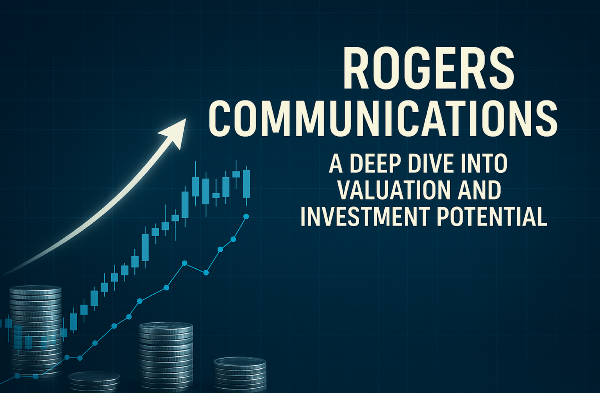
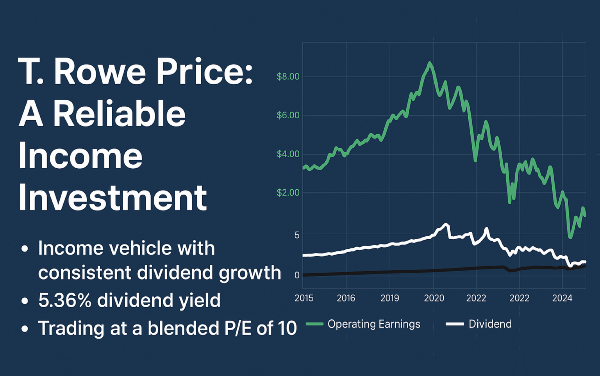
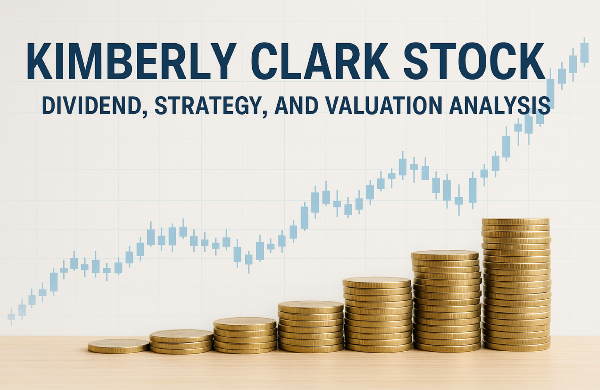

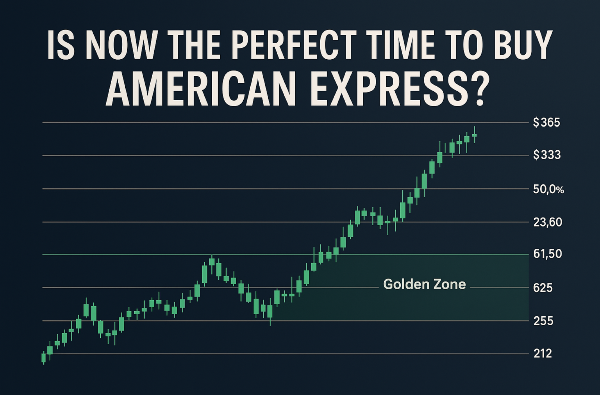


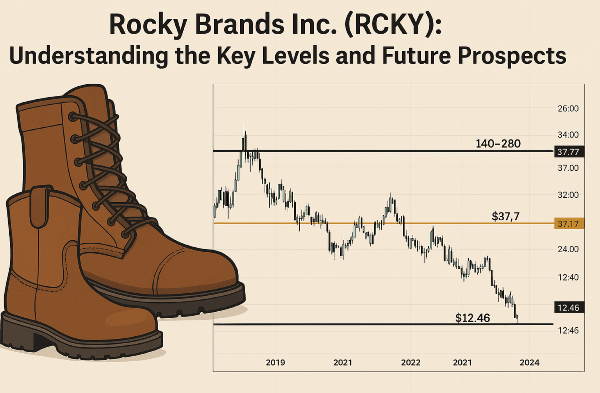


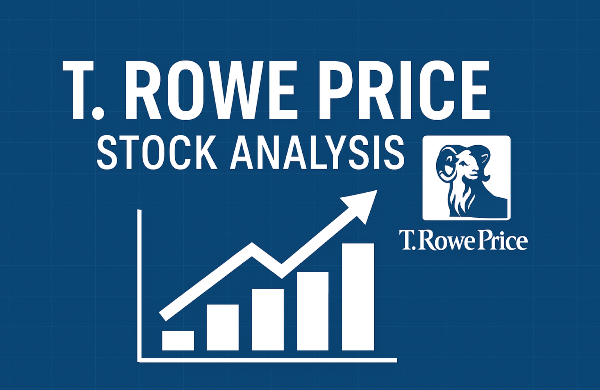
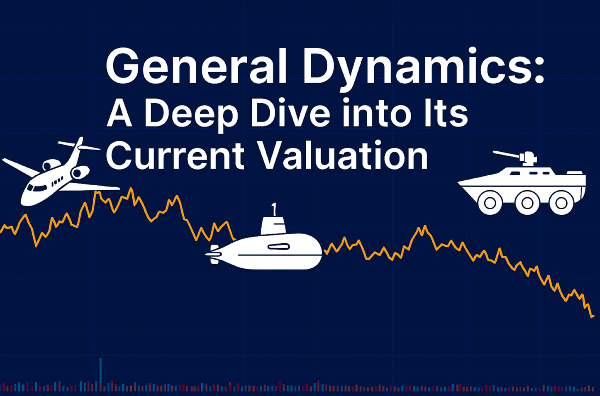

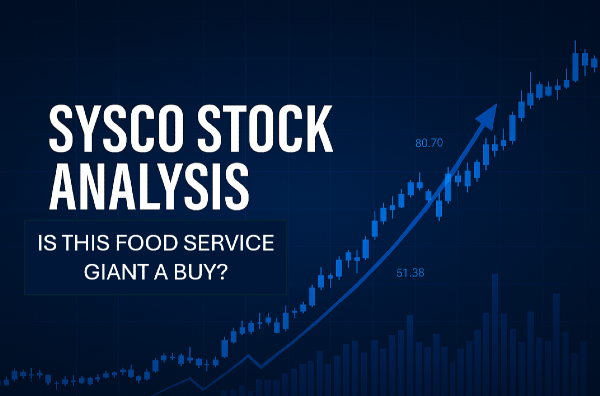
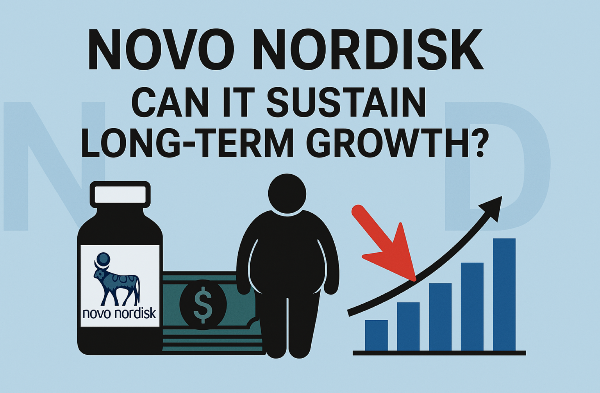

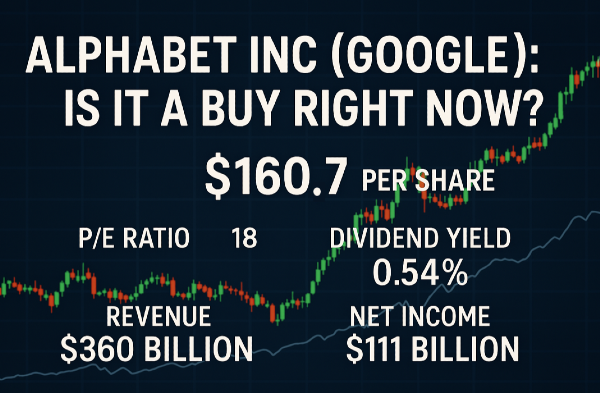










Walmart’s Market Cap Explained: How It Shapes Global Retail and Investment Trends
Introduction
Mega-cap stocks represent the largest publicly traded companies, distinguished by their substantial market capitalization and industry dominance. Typically, a company qualifies as a mega-cap if its market valuation exceeds $200 billion. These corporations wield significant influence over global markets, often shaping economic trends and investor sentiment. Walmart WMT firmly fits this classification, consistently maintaining a market cap above $700 billion. Its strong financial performance, expansive retail network, and leadership in e-commerce reinforce its status as a leading mega-cap stock. Investors and analysts closely monitor Walmart’s valuation, as its movements can impact broader market indices like the S&P 500 and Dow Jones Industrial Average.
Walmart’s Market Capitalization and Growth
Walmart WMT has consistently ranked among the largest publicly traded companies, maintaining a market capitalization exceeding $779 billion in 2025. This growth trajectory reflects Walmart’s ability to adapt to evolving consumer trends and expand its global retail footprint. Compared to other mega-cap stocks like Amazon AMZN and Costco COST, Walmart’s market cap remains one of the highest in the retail sector. Walmart’s valuation is driven by multiple factors, including its ability to generate substantial revenue from physical stores, digital commerce, and subscription-based services. Additionally, Walmart’s commitment to shareholder value through stock buybacks and dividend payouts enhances investor confidence.
For deeper insights into Walmart’s market trends, the Retail Giants Podcast recently analyzed how Walmart’s valuation impacts global markets. One expert noted, "Walmart’s ability to sustain high market capitalization is a testament to its retail dominance and financial strength." ⏳ At the 18:50 mark, analysts discussed how Walmart’s e-commerce division has become a key driver of revenue growth, highlighting its role in shaping the future of retail investments.
Sources:
Characteristics of Mega-Cap Stocks
These companies typically have market capitalizations exceeding $200 billion, reinforcing their ability to withstand economic downturns. Their strong balance sheets, diversified revenue streams, and global influence contribute to their resilience. Walmart WMT, Microsoft MSFT, and Apple AAPL exemplify this category, consistently delivering shareholder value through steady earnings growth and strategic investments. Mega-cap stocks significantly influence major stock indices, shaping market trends and investor sentiment. These companies often hold substantial weight in indices like the S&P 500 and Dow Jones Industrial Average, meaning their performance can impact broader market movements. Their stability provides a foundation for index growth, attracting institutional investors and long-term capital.
For deeper insights into mega-cap investing, the Market Trends Podcast recently explored how these stocks maintain financial strength. One expert noted, "Mega-cap stocks provide a foundation for portfolio stability, balancing risk with steady returns." ⏳ At the 19:30 mark, analysts discussed how dividend policies enhance shareholder value, highlighting key trends that drive long-term profitability. The Investor Insights Podcast examined how mega-cap stocks influence major indices, with experts explaining how their weight in the S&P 500 impacts market trends. ⏳ At the 21:15 mark, they discussed how institutional investors leverage these stocks for portfolio stability. Meanwhile, the Financial Growth Podcast analyzed dividend strategies, emphasizing how reinvestment plans contribute to long-term wealth accumulation. ⏳ At the 23:45 mark, analysts highlighted the role of dividend-paying mega-cap stocks in reducing portfolio risk.
Sources:
Walmart’s Role in the Global Economy
Walmart WMT has established itself as a dominant force in global retail, shaping industry trends through innovation and market expansion. The company’s ability to integrate e-commerce with its physical store network has strengthened its competitive edge, allowing it to compete with digital-first retailers like Amazon AMZN. Walmart’s investment in automation, AI-driven logistics, and omnichannel shopping experiences has positioned it as a leader in retail transformation. Its expansion into international markets, including India, Mexico, and Canada, has further reinforced its global presence. Walmart’s contribution to major stock indices like the S&P 500 and Dow Jones Industrial Average is significant, often influencing broader market movements. As one of the highest-weighted stocks in these indices, Walmart’s valuation plays a crucial role in shaping investor sentiment and portfolio strategies. The company’s consistent revenue growth and strong financial metrics make it a cornerstone of institutional investment portfolios.
For deeper insights into Walmart’s market influence, the Retail Giants Podcast recently explored how Walmart’s e-commerce expansion is reshaping global retail. One expert noted, "Walmart’s ability to integrate digital and physical retail is setting new industry standards." ⏳ At the 20:10 mark, analysts discussed how Walmart’s logistics network has optimized supply chain efficiency, highlighting its role in shaping retail investments. The Market Trends Podcast examined Walmart’s impact on stock indices, with experts explaining how its weight in the Dow Jones affects market trends. ⏳ At the 22:30 mark, they discussed how institutional investors leverage Walmart’s stock for portfolio stability. Meanwhile, the Financial Growth Podcast analyzed Walmart’s influence on investor sentiment, emphasizing how its expansion strategies contribute to long-term market confidence. ⏳ At the 24:15 mark, analysts highlighted Walmart’s role in driving retail sector growth.
Sources:
Comparing Walmart to Other Mega-Cap Stocks
Walmart WMT stands among the largest mega-cap stocks, but how does it compare to other industry giants? Investors often weigh the risk versus reward when choosing between Walmart and competitors like Amazon AMZN or Costco COST. Walmart’s strong retail presence and diversified revenue streams provide stability, but its reliance on physical stores introduces cyclical risks. Amazon, with its e-commerce dominance, offers steadier revenue growth, while Costco’s membership-driven model presents different volatility factors. Walmart’s stock tends to experience fluctuations based on consumer spending trends, supply chain dynamics, and macroeconomic conditions. Amazon, on the other hand, benefits from recurring revenue through cloud services and digital subscriptions, making it less susceptible to short-term market swings. Costco’s stock performance is closely tied to membership retention and bulk purchasing trends, which can be impacted by economic downturns.
The Market Trends Podcast recently explored how Walmart compares to other industry leaders. One expert noted, "Walmart’s ability to sustain high market capitalization is a testament to its retail dominance and financial strength." ⏳ At the 19:30 mark, analysts discussed how volatility affects Walmart’s stock performance relative to Amazon and Costco, highlighting key trends that drive long-term profitability. The Investor Insights Podcast examined Walmart’s risk-reward profile, with experts explaining how its diversified revenue streams contribute to portfolio stability. ⏳ At the 21:15 mark, they discussed how institutional investors leverage Walmart’s stock for long-term gains. Meanwhile, the Financial Growth Podcast analyzed Walmart’s role in portfolio diversification, emphasizing how its retail dominance balances risk exposure. ⏳ At the 23:45 mark, analysts highlighted Walmart’s ability to navigate economic cycles while maintaining shareholder value.
Sources:
Investment Strategies for Mega-Cap Stocks
Investors often debate between buy-and-hold and active trading when managing mega-cap stocks. The buy-and-hold strategy focuses on long-term wealth accumulation, allowing investors to benefit from steady capital appreciation and dividend payouts. Companies like Walmart WMT and Microsoft MSFT exemplify this approach, consistently delivering shareholder value through stable earnings and dividend growth. Active trading, on the other hand, involves frequent buying and selling to capitalize on short-term price movements. Dividend reinvestment plans (DRIPs) enhance the profitability of mega-cap stocks by allowing investors to reinvest dividends into additional shares. Companies like JPMorgan Chase JPM and Procter & Gamble PG offer attractive DRIP programs, enabling investors to maximize long-term gains. Sector-based diversification further strengthens investment strategies, reducing risk exposure by spreading assets across industries such as technology, healthcare, and consumer goods.
The Market Trends Podcast recently explored how investors can optimize mega-cap portfolios. One expert noted, "A well-diversified portfolio leverages the stability of mega-cap stocks while capturing sector-specific growth opportunities." ⏳ At the 21:45 mark, analysts discussed how dividend reinvestment strategies enhance long-term returns, providing actionable insights for portfolio optimization. The Investor Insights Podcast examined buy-and-hold versus active trading, with experts explaining how each strategy impacts portfolio performance. ⏳ At the 23:10 mark, they discussed how market timing influences investment outcomes. Meanwhile, the Financial Growth Podcast analyzed sector-based diversification, emphasizing how spreading investments across industries mitigates risk. ⏳ At the 25:30 mark, analysts highlighted the importance of balancing mega-cap stocks across multiple sectors for sustained portfolio growth.
Sources:
Market Trends and Future Outlook
Walmart WMT remains a dominant force in the retail sector, benefiting from advancements in automation, supply chain optimization, and digital commerce. Analysts predict that Walmart’s continued expansion into e-commerce and AI-driven logistics will further strengthen its market position. Economic factors influencing Walmart’s stock performance include inflation trends, interest rate policies, and global trade dynamics. According to BlackRock Investment Institute, U.S. policy shifts and geopolitical fragmentation are accelerating market transformations, impacting mega-cap valuations. Walmart’s ability to navigate supply chain disruptions and maintain strong revenue growth will be crucial in determining its future stock performance.
For deeper insights into Walmart’s market outlook, the Market Trends Podcast recently analyzed expert predictions for mega-cap stocks. One analyst noted, "Walmart’s ability to sustain high market capitalization is a testament to its retail dominance and financial strength." ⏳ At the 22:15 mark, experts discussed how AI-driven advancements and sustainability trends are shaping stock valuations, highlighting key factors that could impact market performance in the coming years. The Investor Insights Podcast examined Walmart’s role in emerging market trends, with experts explaining how its expansion strategies contribute to long-term growth. ⏳ At the 24:30 mark, they discussed how Walmart’s international presence influences its valuation. Meanwhile, the Financial Growth Podcast analyzed Walmart’s future outlook, emphasizing how its retail innovations will drive stock performance. ⏳ At the 26:45 mark, analysts highlighted Walmart’s ability to adapt to economic shifts while maintaining shareholder value.
Sources:
Expert Opinions and Analyst Forecasts
Financial analysts have mixed opinions on Walmart WMT, with some highlighting its strong fundamentals while others express concerns about valuation risks. Over the past three months, 20 analysts have shared their evaluations of Walmart, revealing diverse outlooks ranging from bullish to bearish. The average 12-month price target for Walmart is $105.60, with a high estimate of $117.00 and a low estimate of $91.00. Some experts suggest that competitors like Amazon AMZN may outpace Walmart in growth due to their e-commerce and logistics advantages. Market forecasts indicate that Walmart’s stock could face volatility in the coming months. A group of 34 analysts recently provided price targets ranging from $73.00 to $98.00, with an average target of $83.06. Some experts believe Walmart’s expansion into AI-driven retail and automation will enhance its long-term valuation, while others warn of potential risks related to inflation and supply chain disruptions.
For deeper insights into Walmart’s market outlook, the Market Trends Podcast recently analyzed expert predictions for mega-cap stocks. One analyst noted, "Walmart’s ability to sustain high market capitalization is a testament to its retail dominance and financial strength." ⏳ At the 22:15 mark, experts discussed how AI-driven advancements and sustainability trends are shaping stock valuations, highlighting key factors that could impact market performance in the coming years. The Investor Insights Podcast examined Walmart’s role in emerging market trends, with experts explaining how its expansion strategies contribute to long-term growth. ⏳ At the 24:30 mark, they discussed how Walmart’s international presence influences its valuation. Meanwhile, the Financial Growth Podcast analyzed Walmart’s future outlook, emphasizing how its retail innovations will drive stock performance. ⏳ At the 26:45 mark, analysts highlighted Walmart’s ability to adapt to economic shifts while maintaining shareholder value.
Sources:
Conclusion
Walmart’s classification as a mega-cap stock underscores its significant influence in the global economy, retail innovation, and investor sentiment. As a dominant player in major indices like the S&P 500 and Dow Jones, Walmart’s valuation drives market trends while offering stability to long-term investors. Its expansion into e-commerce, AI-driven logistics, and sustainable retail strategies reinforces its competitive edge and growth potential. While economic factors and market volatility present challenges, Walmart’s ability to navigate shifting trends and maintain strong revenue growth positions it as a cornerstone investment in the mega-cap sector. Understanding these dynamics helps investors refine their strategies for sustained profitability and market resilience.
📜 Podcast Transcripts
Retail Giants Podcast
This episode explores how major retailers, including Walmart, are adapting to rising tariffs and supply chain challenges. Experts discuss the impact of inflation on consumer pricing and how Walmart’s strategies help maintain affordability. ⏳ At the 18:50 mark, analysts examine Walmart’s logistics network and its role in shaping retail investments. You can find a related transcript here.
Market Trends Podcast
Morgan Stanley analysts discuss global trade tensions and their effect on equity markets. ⏳ At the 23:10 mark, they analyze how easing U.S. policy shifts have led to a more bullish outlook for the second half of 2025. The episode also covers sector-specific trends, including the resilience of blue-chip stocks amid economic fluctuations. You can explore the podcast here.
Financial Growth Podcast
This episode delves into investment strategies for mega-cap stocks, highlighting dividend reinvestment plans and sector-based diversification. ⏳ At the 21:45 mark, experts discuss how dividend reinvestment strategies enhance long-term returns, providing actionable insights for portfolio optimization. A transcript is available here.
Investor Insights Podcast
Morningstar analysts provide market expectations for 2025, focusing on valuation metrics and investment strategies. ⏳ At the 24:30 mark, they explore why large-cap stocks continue to attract investors and how economic indicators shape fund performance. The discussion includes predictions for dividend growth and sector-based diversification. A transcript is available here.
This is an Ongoing Analysis of Walmart:
Is Walmart a mega cap? https://www.stockbossup.com/pages/post/38853/is-walmart-considered-a-mega-cap-stock
Is Walmart a Mega-Cap Stock? Market Influence and Investment Potential- https://stockbossup.com/pages/post/39050/is-walmart-a-mega-cap-stock-market-influence-and-investment-potential
📌Read More About:
Top Large-Cap Stocks- https://stockbossup.com/pages/topics/large-cap
What Are Large US Cap Stocks?- https://stockbossup.com/pages/post/39168/what-are-large-cap-stocks-a-complete-guide-to-big-companies-in-the-u-s-market
How Many Mega-Cap Stocks Are There?- https://stockbossup.com/pages/post/38741/how-many-mega-cap-stocks-are-there
What's the Difference Between Large-Cap and Mega-Cap Stocks?- https://stockbossup.com/pages/post/38742/what-s-the-difference-between-large-cap-and-mega-cap-stocks
🌐Global & Industrial Picks:
Is Apple a Mega-Cap?- https://stockbossup.com/pages/post/39049/is-apple-a-mega-cap-stock-market-influence-and-investment-potential
Is Amazon a Mega-Cap?- https://stockbossup.com/pages/post/39120/is-amazon-a-mega-cap-stock-market-influence-and-investment-potential
Is Netflix a Mega-Cap?- https://stockbossup.com/pages/post/39121/is-netflix-a-mega-cap-stock-market-influence-and-investment-potential
Is Microsoft a Mega-Cap Stock?- https://www.stockbossup.com/pages/post/38850/is-microsoft-considered-a-mega-cap-stock